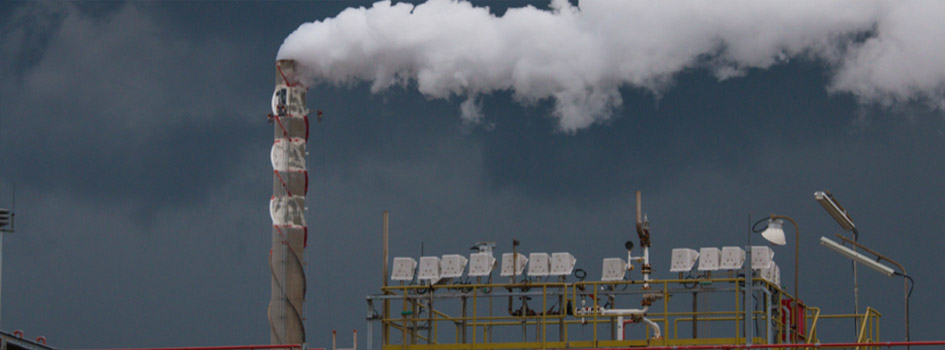
What Are VOCs? Removing VOCs from Biogas | DXP
With the drive for a safer, greener planet being embraced by more countries of the world, the industry for renewable energy will continue to grow. Biogas represents one of the fastest-growing sources of renewable energy for domestic, commercial, and industrial processes. Before biogas can be channeled to uses, it must first be optimized by removing undesirable contaminants such as volatile organic compounds.
What Are Volatile Organic Compounds?
Volatile organic compounds (VOCs) are chemical compounds (mostly gases) that are released from various organic and inorganic materials. These chemical compounds can also be associated with newly formed biogas. VOCs can have deleterious short-term and long-term effects on the health of humans, as well as harm plants, animals, and the natural environment.
Sources of VOCs
Volatile organic compounds are present in substances used in everyday life. Both domestic and industrial products are potential sources of VOCs. Outlined below are some common materials that emit VOCs into the environment.
Industrial sources:
- Renewable fuels and their substrates (biogas, digester gas, organic wastes)
Domestic emissions:
- Air fresheners
- Insect repellants
- Disinfectants and surface cleaners
- Stored domestic fuels and lubricants
- Aerosol sprays
- Wood finishing chemicals
- Pesticides and herbicides
- Paints and solvents
- Material preservatives
Commercial sources:
- Building materials
- Office furniture finishing
- Office equipment (copiers, printers)
VOC Examples
VOCs are found in several substances, both in natural and man-made sources. Common examples of these VOCs are highlighted below.
- Acetic acid
- Acetone
- Butanal
- Ethanol
- Carbon disulfide
- Formaldehyde
- Methylene chloride
- Terpenes and siloxanes
Acetone
This chemical compound is commonly found in furniture varnishes, wallpapers, and nail polish removers. In higher doses, acetone can pose a significant health risk, and as such, healthcare authorities advise the use of less toxic alternatives when possible.
Butanal
Butanal is released by many domestic combustion processes. Candles, gas-powered stoves, and barbeques all release butanal as a by-product of fuel combustion. Improperly vented spaces will result in a harmful accumulation of this VOC.
Ethanol
Many household cleaning agents (dishwashing fluids, laundry detergents, surface cleaners) are alcohol-based containing different concentrations of ethanol.
Carbon Disulfide
This VOC is commonly associated with chlorine-treated tap water.
Formaldehyde
This is one of the most common VOCs found in our environment today. Formaldehyde has widespread use as a preservative and material finishing product. It is also found in plastics and lacquers and can be released when these materials are heated.
Methylene Chloride
Methylene chloride is found in aerosolized solvents, paint removers, and flame retardant materials.
Terpenes and Siloxanes
Terpenes and siloxanes are volatile organic compounds form as a by-product of biogas creation. These contaminants can damage sensitive gas production equipment and also put workers at risk of adverse long-term health outcomes.

VOC Health Effects
The emission of volatile organic compounds into the immediate environment can have both short-term and long-term effects on exposed persons.
The most commonly cited adverse effects of VOC exposure include:
- Irritation of the eyes, nose, and ears
- Headaches
- Allergic reactions
- Feelings of being unwell
- Nausea and vomiting
- Visual problems
- Impairments in memory and cognition
- Organ damage (liver, kidney, and brain injuries)
- Cancers
The above-mentioned problems are most commonly associated with exposure to substantial amounts of volatile organics in the short-term or lower doses over a long period. At present, there is limited data available on the true relationship between exposure to domestic VOCs and adverse health outcomes.
VOCs Environmental Effects
VOCs can have detrimental effects when they are released into the natural environment in significant quantities. Two major environmental impacts of VOC emission are the formation of acid rain and ozone.
Acid Rain
Many volatile organic compounds contain oxides of sulfur and nitrogen. When these chemical substances are released into the atmosphere, they can react with water to form acidic solutions. These solutions will form acid rain, which can affect human, plant, and animal health. Acid rain can also have damaging effects on man-made structures and machines (metal corrosion, vehicle damage).
Ozone Formation
Naturally formed ozone is typically found in the upper atmosphere, where it serves to protect us from harmful ultraviolet rays. However, some VOCs can precipitate the creation of ozone near ground level resulting in smog formation. Ozone is toxic to humans resulting in serious health conditions. Also, close contact with ozone can have serious consequences on plant and animal life, disrupting the ecosystem.
How to Reduce VOCs
There are various ways to reduce the amounts of volatile organic compounds released into our immediate surroundings and the larger environments.
- Material substitution with replacement of VOCs with less toxic alternatives
- Proper ventilation of combustion spaces
- Strict adherence to VOC emission regulations
- Correct disposal of used volatile materials
- Correct and consistent use of air filtration equipment
- Use of biological purifiers to capture volatile compounds
Removing VOCs From Biogas
The use of activated carbon filters to remove volatile organic compounds from biogas has become standard industry practice. Efficient filtration technology can be used to eliminate VOCs at various stages of biogas synthesis and optimization. Gas separation is achieved by utilizing the adsorptive properties of carbon within the filter units.

IFS Can Help Your Company Remove VOCs From Biogas
At DXP & IFS, we are dedicated to providing our clients with an optimized industrial experience. We offer excellent VOC removal services that are guaranteed to optimize your biogas processes.
For further information about our products and services, please contact us today!

